Dean Micro-Flo Built-In Series Installation, Operation & Maintenance Manual
- Category
- Deep fryers
- Type
- Installation, Operation & Maintenance Manual

Dean, a member of the Commercial Food Equipment Service Association, recommends using
CFESA Certified Technicians.
Price: $6.00
24-Hour Service Hotline 1-800-551-8633
819-5745
10-01
Micro-Flo Built-In Series Filtration
Systems
Installation, Operation & Maintenance Manual
Models MF90-12BI, -14BI, -18BI & -20BI

i
Please read all sections of this manual and retain for future reference.
Installation, maintenance, and repairs should be performed by your Dean
Factory Authorized Service Center.
CAUTION
DO NOT STORE OR USE GASOLINE OR OTHER FLAMMABLE VAPORS AND LIQUIDS IN
THE VICINITY OF THIS OR ANY OTHER COOKING APPLIANCE.
WARNING
IMPROPER INSTALLATION, ADJUSTMENT, ALTERATION, SERVICE, OR
MAINTENANCE CAN CAUSE PROPERTY DAMAGE, INJURY OR DEATH. READ THE
INSTALLATION, OPERATING AND MAINTENANCE INSTRUCTIONS THROUGHLY
BEFORE INSTALLING OR SERVICING THIS EQUIPMENT.
WARNING
SAFE AND SATISFACTORY OPERATION OF YOUR EQUIPMENT DEPENDS ON ITS
PROPER INSTALLATION. INSTALLATION MUST CONFORM TO LOCAL CODES, OR IN
THE ABSENCE OF LOCAL CODES, WITH THE LATEST EDITION OF THE NATIONAL
ELECTRIC CODE, N.F.P.A. 70.

ii
Micro-Flo Series Built-In Filters
TABLE OF CONTENTS
Page #
1. DESCRIPTION AND SPECIFICATIONS 1-1
2. PRE-INSTALLATION 2-1
3. RECEIVING & INSTALLING THE FILTER 3-1
4. OPERATIONS 4-1
5. CLEANING AND MAINTENANCE 5-1
6. TROUBLESHOOTING 6-1
7. FACTORY SERVICE AND PARTS ORDERING 7-1

1-1
MICRO-FLO BUILT-IN SERIES FILTRATION SYSTEMS
CHAPTER 1: DESCRIPTION AND SPECIFICATIONS
Micro-Flo Built-In Series filtration systems are available in sizes to handle quantities of oil up to 120
pounds. They can be fabricated to match Dean gas (Super Marathon & Decathlon) or electric fryers
(Cool Zone & Flatbottom Series), or in stand-alone cabinets. Micro-Flo filtration systems
incorporate a "gravity drain" design. The oil return line can be configured overhead (prior to 1994),
internally plumbed, or returned by the hose & nozzle.
Prior to 1994, handle-operated ball valves or optional "push-pull" linkage-operated ball valve
controls located in the filter cabinet were available. Current systems are configured with the oil-
return and drain valve controls located in each fryer cabinet.
1.1 Construction
Micro-Flo Built-In filters are constructed with the following features:
ø Fully welded, heavy gauge steel, with a removable stainless steel filter pan.
ø Internal oil return lines are plumbed with either a "push-pull" valve system in the filter
cabinet or manual drain valves at each fryer.
ø A 1/3 HP motor, coupled with a 5 GPM pump returns filtered oil to the fry vessel. An 8
GPM pump (optional) is also available.
1.2 Operating Controls
Micro-Flo Built-In filters are equipped with the following operating controls:
ø The "ON-OFF" power switch is mounted on the front control panel of the filter cabinet. If
the filter is equipped with an optional heater, a three-position switch (Heater/Off/Pump) is
included as the power switch.
ø Individual fryer drain valves control which fryer is filtered, reducing operator error.
ø Prior to 1994: Oil-return valves are either "push-pull" controls or "lever-operated" manual
ball valves; the push-pull controls are in the filter cabinet and the "lever-operated" valves are
at each individual fryer.
ø 1994 and later: Oil-return valves are push-pull controls, located within each individual fryer
cabinet. A manual "hose-disconnect" valve is located in the filter cabinet.

2-1
MICRO-FLO BUILT-IN SERIES FILTRATION SYSTEMS
CHAPTER 2: PRE-INSTALLATION
2.1 General
Micro-Flo Built-In filters are compatible with the following fryer models:
Cool Zone Fryers: Super Marathon and Decathlon Gas Fryers
Flatbottom Fryers: 1824G and 2424G (gas); 1824E and 2424E (electric)
Electric Fryers: 714E, 1414E, 1818E, 2020E and 18UE
2.2 Standards
Installation must be planned in accordance with all applicable state and local codes.
2.3 Dimensions & Capacities
Model Approximate Oil
Capacity (lbs hot)
Filter Paper Size
(W x L)
MF90-BI-12 60 11 x 22-5/8"
MF90-BI-14 60 12-5/8 x 22-5/8"
MF90-BI-18 80 16-3/8 x 24-3/8"
MF90-BI-20 108 16-3/8 x 24-3/8"
2.4 Electrical Connection
The wiring diagrams are in Section 7 of this manual; the filter may or may not be equipped with a
heater probe.
One connection only is required, to a 115v, 60 Hz, 15 amp electrical supply. The unit is equipped
with a flexible six foot, 16-3 SJT power cord; if an extension cord is required, it must be a three-
conductor grounded cord of at least 16 gauge.
WARNING
Electrical Grounding Instructions
This filter is equipped with a three-prong, grounded plug for your protection against
shock hazard, and should be plugged directly into a properly grounded, three-hole
receptacle. Do not cut off, remove, or otherwise by-pass the grounding prong on this
plug.

3-1
MICRO-FLO BUILT-IN SERIES FILTRATION SYSTEMS
CHAPTER 3: RECEIVING & INSTALLING THE FILTER
3.1 General
Unpack the filter (or the fryer/filter combination) carefully and remove all filter parts from the
carton. Do not discard or misplace parts – they will be needed for final assembly.
After unpacking, immediately check the equipment for visible signs of shipping damage. If such
damage has occurred, do not refuse shipment. Contact the freight carrier and file the appropriate
damage claims. In case of shipping damage, do not contact the factory. The responsibility for
shipping damage is between the carrier and the dealer or end-user.
3.2 Installation Procedures
Installation must be planned in accordance with all applicable state and local codes, and as follows:
A. Install casters on fryers/cabinets prior to assembling filter components (where applicable).
B. Position all fryers/cabinets into their working position without joining, leaving enough space
for the filter.
C. Join fryers on either side of filter with the drain tube in front, and the oil return line in rear.
Note: Return oil line may be either rigid pipe or return hose with wand, depending on
arrangement ordered. Keep all oil-return line joints loose until full line-up is in place, and
then tighten finger tight only.
D. The drain tube from inboard fryers must terminate in an elbow, with the pipe nipple
extending into the filter pan.
E. Oil return lines are ½-inch steel tubing. Keep all joint fittings loose until the complete
fryer/filter battery is assembled and in place.
F. Connect power to the filter by plugging the filter power supply cord into the appropriate
power outlet, located inside the fryer.
G. Tighten the drain tube connections at the front and the nuts and bolts at the rear. Do not
over-tighten the oil return line connections.
H. Connect the fryer electrical supply to power source.

4-1
MICRO-FLO BUILT-IN SERIES FILTRATION SYSTEMS
CHAPTER 4: OPERATIONS
4.1 Initial Installation
On initial installation and before each use, remove all loose parts from the filter, wash the filter pan
and all accessories in hot, soapy water and dry thoroughly.
4.2 Assembling The Filter Pack
4.2.1 Models Prior to 1994
Micro-Flo filtration systems are shipped with a filter starter kit containing filter paper, filter powder
and other accessories. Remove the filter hold-down ring, place two papers on the grid, and then
replace the hold-down ring. It is essential that "Dean" filter papers are used; use of other than OEM
parts will void the warranty. The remaining filter papers should be stored away from moisture for
future use.
The illustration below shows the proper assembly of the filter.
123
1. Paper support grid
2. Filter paper (2 sheets)
3. Hold-down ring (4- or 6-latch design, according to model)

4-2
4.2.2 Models 1994 and After
See section 4.2.1 for filter pack assembly. The illustration below shows the proper assembly of the
filter pack.
1 2 3
1. Paper support grid
2. Filter paper (2 sheets)
3. Hold-down ring (2-latch design)
4.3 Normal Operation
4.3.1 Models Prior to 1994
Micro-Flo Built-In filters come equipped with an
individual return valve at each fryer vessel, or
"push-pull" controls in the filter cabinet. The
"push-pull" version oil-return valves are located
inside of the filter cabinet. Manual-open valves
are replaced with a push-pull linkage actuated
valve.
Micro-Flo BI-Series with “Push-Pull” variation.

4-3
4.3.1 Models Prior to 1994 (cont.)
If filter is equipped to filter solid shortening, the "On-Off" switch will be a three-position switch
labeled "Pump/Off/Heat". The "Pump" position is used to operate the filter. The "Heat" position is
used to melt residual shortening from previous filter operations. Do not attempt to melt a block of
solid shortening with the filter heater. Damage to the heating elements will occur.
DANGER
EXTREME BURN HAZARDS
The temperature of oil to be filtered should be approximately 350°F (175°C). When
using flexible return hoses, hold the outlet nozzle securely in the frying vessel or
filter pan at all times before operating power switches or valves. Failure to do this
can result in severe burns.
Always wear oil-resistant, insulated gloves when working with hot oil!
Do not leave a filter machine unattended during operation. The action of the oil
moving through the lines could cause a flexible return hose to shake loose and
spray hot oil.
4.3.1.1 Filter Pan Setup
A. First, place the support grid in the bottom of filter pan.
B. Put two filter paper sheets on top of the support grid. Ensure the paper covers the whole
filter pan bottom.
C. Position the hold-down ring on top of the filter papers and latch the hold-down ring and filter
papers securely against the filter pan bottom, forming a tight seal.
D. Sprinkle 16 ounces of filter powder on the top filter sheet. Distribute the powder over the
filter paper as evenly as possible. If filtering a second frypot immediately after the first, add
only 8 ounces of filter powder for the second filtering.
CAUTION
The crumb tray (if applicable) in built-in filter systems must be emptied into a
fireproof container at the end of frying operations each day. Some food particles
can spontaneously combust if left soaking in certain shortening material.
E. Place the crumb screen (if used) in the filter pan. Ensure the crumb screen is clean, prior to
placement. Allow the crumb screen to rest on the top edges of the hold-down ring.
F. Slide filter pan back inside cabinet and close door.

4-4
4.3.1.2 Filter Operation
A. Turn fryer "OFF".
B. Filter one fryer at a time.
C. Remove fry-baskets, crumb screen and/or drop-in grid from fryer.
D. Stir the oil below the heat transfer tubes or electric elements with an "L" shaped Teflon brush
(included with accessory pack) to loosen sediment.
E. Open the drain valve at the fryer and continue to stir and brush down the sides of the vessel
and tubes or electric elements.
F. Push-Pull Variation: All oil-return valves are
located inside the filter cabinet. Open the filter
cabinet door. Pull the "Yellow" oil return valve
handle corresponding to the fry vessel being
filtered.
Standard Variation: Individual oil-return valves are
located within each fryer cabinet. Open the fryer
cabinet door at the fry vessel being filtered and
open the oil return valve.
G. Close the hose connect valve (or pull the red
handle) at the filter.
H. Turn the filter motor switch to "ON".
Oil/shortening will be circulated through the filter.
I. After filtering is complete, close the drain valve.
J. Replace drop-in grid in fryer.
K. Once the drop-in grid is covered with filtered
oil/shortening, turn on the fryer power switch and
push the reset switch (if applicable).
Push-pull variation valve control
handles. Yellow handles operate oil
return valves, and the red handle
operates the hose connect valve.

4-5
4.3.1.2 Filter Operation (cont.)
L. Allow the filter to pump bubbles into the fryer for 15-20 seconds to ensure evacuation of all
oil/shortening from the filter pan and return lines.
M. Turn the filter switch to "OFF".
N. Close the oil return valve (or push yellow handle) to the fryer being filtered.
NOTE: The filtering cycle for one fryer is complete. To filter additional fryers, repeat the
above steps, starting with item "A". Complete the process with the following final step.
CAUTION
When the filter pump is "ON", NEVER open the hose connect valve without the
optional flexible hose connected. Always ensure that the optional flexible hose is
properly connected and the hose wand is firmly held in the filter pan or fry vessel
prior to opening the hose connect valve. Failure to do this increases the chance of
burn injury from spraying hot oil/shortening.
O. Open the hose connect valve (or push red handle) at the filter and close the filter cabinet
door.
NOTE
With the hose connect valve "open", any oil left in the return lines will drain into the filter
pan. With the return valve "closed", no oil will back-flush from the frying vessel, into the
lines. When not filtering, leave the hose connect valve "open", and the oil-return valve
"closed".
4.3.1.3 Changing Filter Paper
The top piece of filter paper should be discarded when it becomes dark or scuffed in appearance.
Follow the procedure below and refer to the illustration on page 4-1.
A. Prior to changing the paper, use the optional flexible hose with about one-inch of oil in the
filter pan or oil drawn from the fryer to flush all debris from the filter pan sides onto the
paper.
B. Return all oil to the fryer.
C. Open the locking latches of the hold-down ring (see Item #3, page 4-1) and lift the ring out of
the filter tank.
D. Roll both ends of the used (top) sheet of paper in to the center, ensuring no sediment falls
out. Discard top filter paper.
E. Remove the second sheet of paper and set aside for later use.

4-6
4.3.1.3 Changing Filter Paper (cont.)
F. Remove and check the grid for cleanliness and clean if necessary.
G. Inspect the filter pan for cleanliness and clean if necessary; also inspect the oil-pickup tube at
the rear of the pan for obstructions or solidified shortening.
H. Replace the bottom grid, place a new sheet of filter paper on the grid, and place the old
bottom sheet on top of the new piece. Use only filter paper approved for the filtration
system. Failure to do so will increase the likelihood of system malfunction.
I. Replace the hold-down ring.
4.3.2 Models 1994 and After
Beginning in 1994, Micro-Flo Built-In filters
were redesigned with the following changes:
• An orange-handled valve with hose
disconnect are located within the filter
cabinet. An optional hose is available
for washing out the fry vessel and filter
pan during the filtering process.
• A user-friendly hold-down ring with two
spring catches replaces the four- or six-
latch hold-down ring.
• Pump and motor are relocated for easy
serviceability.
• The oil/shortening vacuum line is outfitted with swivels, making it user-friendly and longer
lasting.
• Lever-operated drain and oil-return valves are located within each fryer cabinet. An
optional lever-operated drain-flush valve (if equipped) is located in the fryer cabinet furthest
from the filter.
4.3.2.1 Filter Paper Configuration
1. Disconnect the oil suction line from the filter pan and pull the pan out from the filter cabinet.
2. Ensure paper support grid is in position. Place two pieces of filter paper over the support
grid, completely covering the bottom of the pan. Replace the hold-down ring and lock into
place with spring catches on each side of the hold-down ring.
Micro-Flo BI-Series new design.

4-7
4.3.2.1 Filter Paper Configuration (cont.)
3. Sprinkle 16 ounces of filter powder evenly over the filter paper. Return the filter pan to
filter cabinet, ensuring that the drainpipe outlets are directly over filter pan. If filtering a
second frypot immediately after the first, add only 8 ounces of filter powder for the second
filtering.
4. Reconnect the oil-suction line to filter pan and snap into place. Ensure the quick-disconnect
fitting is properly connected by pulling up on the male assembly while snapping into place.
5. Close cabinet door. Filter is ready for operation.
4.3.2.2 Filter Operation
1. Ensure that the power switch or operating thermostat dial is in the "OFF" position.
2. Remove fry-baskets, crumb screens and/or
support grids along with any large debris on
the screens. Stir the oil under the heat
transfer tubes or elements with the L-shaped
teflon brush.
NOTE: Inspect the high-limit and thermostat
bulbs to ensure they are properly mounted.
Ensure that all mounting hardware is intact
and properly tightened.
3. Open the fryer drain of the fryer to be filtered
by pulling the "Red" drain valve handle under
the fryer vessel. Continue stirring the oil as it
drains from the fry vessel. With the L-shaped
brush, scrub the undersides and between the
tubes (gas fryers), or under and around the
heating elements (electric). Brush the vessel
sides and tops of tubes to remove debris. Use
care not to damage sensing bulbs or heating
elements while removing debris. If the drain
becomes blocked by debris, clear the
blockage with the cleanout rod.
4. Pull the "Yellow" handle located to the left of
the drain valve to open the oil return valve.
Cleaning fry-vessel tubes and bottom with "L-
shaped" brush.
"Yellow" oil-return
handle.
"Red" drain-valve
handle.

4-8
4.3.2.2 Filter Operation (cont.)
5. Ensure the "Orange" handle in the filter
cabinet is closed and turn the filter power
switch "ON".
Note: The filter circuit is protected by a 7-amp
breaker located on the control panel of the filter
cabinet. If the circuit breaker trips, turn the filter
"OFF", reset breaker and continue filtering. If
the breaker continues to trip, ensure the correct
oil-return valve for the fryer being filtered is
"ON", and that there are no obstructions in the
return lines.
6. If the filter system is equipped with the drain-
flush option, close the flush valve by pulling
the "Blue" handle located in the fryer cabinet
farthest from the filter cabinet.
7. Oil should circulate through the filter and
back to the fryer vessel. Continue to use the
L-shaped brush to wash debris from the sides
and bottom of the fryer.
8. Close drain valve when fryer is clean by
pushing the "Red" handle. Continue
pumping filtered oil back into the fryer.
Turn "Orange" handle to the right (handle end "UP")
to close hose connect valve.
Filter power switch and circuit protection breaker.
Pull "Blue" handle to
close
the drain-flush valve (if
applicable).

4-9
4.3.2.2 Filter Operation (cont.)
Note: Drain-Flush Line Only- If fryer being filtered is used for frying heavily breaded products, or
is the last fryer in the battery, use the drain flush to flush excess sediment from the drainpipe into the
filter pan.
CAUTION
When the drain flush is used to keep drain line unclogged, ALL RED DRAIN VALVES
MUST BE CLOSED.
9. Open the drain flush valve by pushing the "Blue" handle located in the fryer cabinet furthest
from the filter cabinet. Close the "Yellow" oil-return valve to the fryer being filtered. All valve
handles should now be pushed in.
10. When the drain line is flushed, open the
"Yellow" oil return valve to the fryer being
filtered. Pull the "Blue" handle to close the
drain flush line. Filtered oil/shortening will
begin to fill the fry vessel.
CAUTION
Wear protective gloves and use an appropriate
tool when replacing drop-in grid/crumb screen
in fry vessel. Filtered oil is hot and can cause
burn injury.
11. Turn the fryer power-switch "ON" when
filtered oil/shortening covers the heat transfer
tubes or heating elements. Replace the crumb
screen or drop-in grid.
Fry vessel refilling with filtered oil/shortening.
Replace drop-in grid/crumb screen as oil level
rises. Use an appropriate tool (fryer cleanout tool,
etc.) to place the screen in hot, filtered
oil/shortening.

4-10
4.3.2.2 Filter Operation (cont.)
12. Allow the filter to pump bubbles into the
fryer for 15-20 seconds to ensure evacuation
of all oil/shortening from the filter pan and
return lines.
13. Close the "Yellow" oil-return valve and
immediately turn the filter pump "OFF".
Ensure all oil return valves are completely
closed so as to prevent oil/shortening from
siphoning out of the fry vessels. Close all
doors. Fryers are ready for operation.
4.3.1.3 Changing Filter Paper
The top piece of filter paper should be discarded when it becomes dark or scuffed in appearance.
Follow the procedure below and refer to the illustration on page 4-2.
1. Prior to changing the paper, use the optional flexible hose with about 1-inch of oil in the filter
pan or oil drawn from the fryer to flush all debris from the filter pan sides onto the paper.
2. Return all oil to the fryer.
3. Open the locking latches of the hold-down ring (see Item #3, page 4-2) and lift the ring out of
the filter tank.
4. Roll both ends of the used (top) sheet of paper in to the center, ensuring no sediment falls
out. Discard top filter paper.
5. Remove the second sheet of paper and set aside for later use.
6. Remove and check the grid for cleanliness and clean if necessary.
7. Inspect the filter pan for cleanliness and clean if necessary; also inspect the oil-pickup tube at
the rear of the pan for obstructions or solidified shortening.
8. Replace the bottom grid, place a new sheet of filter paper on the grid, and place the old
bottom sheet on top of the new piece. Use only filter paper approved for the filtration
system. Failure to do so will increase the likelihood of system malfunction.
9. Replace the hold-down ring.
Bubbling oil indicates air is being pumped through
the oil return lines.

4-11
4.5 Operating Problems
Operating problems account for over 90 percent of filtration system malfunctions. If solid
shortening is being used, and the filter is operated improperly, shortening solidification will occur in
the lines as the shortening cools, increasing the chance for clogged lines.
Micro-Flo Built-In filtration systems are equipped with an overload circuit breaker to help prevent
filter motor damage in case of overload. Obstructions in the oil return lines can cause motor
overheating, which eventually results in motor overload. If the oil return valve is open and filtered
oil is not flowing into the fryer, then shortening has solidified in the lines.
Clogs or plugs can occur anywhere in the system. Locate the blockage by examining each part of
the filter system — the filter pan assembly, hoses and lines in the filter, and return lines or hoses to
the fryer.
DANGER
Never use a propane torch to melt solidified shortening in any part of the
fryer/filtration system.
4.5.1 Plugged Paper
Plugged paper: Improper use of filter powder will cause a slow oil flow return rate. The top filter
paper should be scraped (if not discarded) after filtering oil used for heavily breaded products. The
first indication of paper plugging is a surging, jerking movement of the hose. To correct, check the
instructions for the correct use of powders, and scrape the filter paper more frequently.
4.5.2 Plugged Pan Bottom Intake
Five oil-intake ports are located under the filter paper and wire grid in the filter pan. When filter
paper is changed, debris can fall into the bottom cavity where it collects around the intake ports. The
ports are located on the underside of the projecting pipe and cannot be seen. Remove the filter paper
and grid periodically to clean these ports.
4.5.3 Plugged Filter
A. If the filtration system is equipped with a pan heater, turn the heater on for approximately 20
minutes. Residual shortening in the bottom of the filter pan should melt during this time.
Insert the flexible hose (if so equipped) into the filter pan holster and turn the pump motor
switch to the "Out" or "On" position. With the lever-operated valve "Open", visually confirm
that oil circulates in the filter. If it does not, the filter pan, filter pump or any of the hoses
and/or lines could be clogged.
B. Disconnect the oil line from the filter pan to the pump. Put your finger over the inlet
connection of the pump and turn the filter motor switch to "Out" or "On". If suction is felt,
then the pump is clear and the plug is in the bottom of the filter, or in the filter line leading to
the pump.

4-12
4.5.3 Plugged Filter (cont.)
WARNING
Never blow into filter return lines while the lines are connected to locate a plug.
Never hold your hand over the outlet end of a line. A plug could unexpectedly
release and spray hot oil, causing severe burns.
When checking the filter pump for blockage, turn the power switch to the "Out" or
"On" position.
C. Disconnect the tubing from the bottom of the filter pan to the pump return line and try to
blow through it. If air will not flow through, the return line is plugged. Soak the line in hot
water until air can be blown through it.
D. When the pump return line is clear, reconnect it to the pan and turn the motor switch to "Out"
(or "On"). If oil still does not flow, inspect the bottom of the filter pan for blockages.
Disassemble the filter pan and thoroughly wash the pan in hot, soapy water. Dry thoroughly
before reassembling.
4.5.4 Return Lines
A. If your system is equipped with a flexible return hose, turn the motor "Off" and disconnect
the hose. Attempt to blow through the hose from the inlet end. If no air will pass through the
hose, then suspect a clog. Soak the hose in hot water to melt the plug.
Note: When soaking a line in hot water, keep both open ends out of the water. If water gets
into the hose, ensure that all traces are removed before filtering hot oil/shortening. Failure to
do so will result in hot oil spattering, increasing the potential for burn injury.
Reconnect the flexible hose and insert the outlet nozzle into the filter pan holster. Turn the
pump switch to "Out" (or "On"). If oil does not flow to the fryer being filtered, then inspect
the return lines between the filter pump and the fry vessel.
B. If the filter system is configured with one built-in return line, with exits to individual fryers,
turn the filter pump "Off", and close all fryer return valves. Open the return valve closest to
the filter and turn the pump "On". If oil flows, then inspect the next fryer. Continue the
process until the blockage is discovered. When the blockage is located, disassemble that part
of the return line and clean thoroughly. Reassemble the return line and check for blockages.
C. The "push-pull" filter version utilizes individual return lines from the filter to each fryer.
Check each line for oil flow after inspecting other parts of the filter system. Once the plugged
line is discovered, completely disassemble and clean the line.

4-13
4.5.4 Return Lines (cont.)
To prevent plugged lines when using solid shortening, adhere to the following:
ø If the filter is equipped with a pan heater, use it each time a fryer is filtered.
ø Allow the pump to run for 15-20 seconds after air starts to flow through the lines (or flexible
hose), before shutting off the filter. Clearing residual shortening/oil from the return lines
reduces the likelihood of clogged lines.
ø When the filtering cycle is complete, disconnect the flexible line and hang it up to drain.

5-1
MICRO-FLO BUILT-IN SERIES FILTRATION SYSTEMS
CHAPTER 5: CLEANING & MAINTENANCE
5.1 Each Filter Use
Every time the Micro-Flo filter is used:
• Wash down the insides of the filter pan with hot oil.
• Change the top filter paper sheet after each filter session or at the end of the day. Scrape
sediment from the top sheet after each frypot is filtered within a filter session.
• Wipe up any oil which may have splashed or spilled.
• Wipe all exterior surfaces of the filter unit.
NOTE: Always scrape sediment and debris from the paper when the system is warm, to prolong the
life of the paper.
CAUTION
Do not run water or boil-out solution through the filtration system. Doing so will
cause irreparable damage to the pump, and the warranty will be voided.
5.2 Daily-Close of Business
At the close of a working day, the last order of business should be to filter the oil in all fryers. When
the last fryer is finished, follow these steps:
1. Ensure the flexible hose and pump lines are clear by running the filter pump for an
additional 15–20 seconds after air bubbles start coming from the oil return line. After
filtering, hang the flexible hose up to drain.
2. Remove the crumb tray and empty contents into a fireproof container. Remove the hold-
down ring assembly, then remove the filter paper and filter support screen.
3. Discard the top filter paper sheet and retain bottom filter paper sheet for re-use.
4. Wash all filter components with hot soapy water and rinse.
5. Dry all filter parts and filter pan thoroughly before reassembling.
6. Check all fittings at the rear of the filter unit; ensure that all fittings are properly tightened.
CAUTION
The crumb tray (if applicable) in built-in filter systems must be emptied into a
fireproof container at the end of frying operations each day. Some food particles
can spontaneously combust if left soaking in certain shortening material.
Page is loading ...
Page is loading ...
Page is loading ...
Page is loading ...
Page is loading ...
Page is loading ...
Page is loading ...
Page is loading ...
Page is loading ...
Page is loading ...
Page is loading ...
Page is loading ...
Page is loading ...
-
 1
1
-
 2
2
-
 3
3
-
 4
4
-
 5
5
-
 6
6
-
 7
7
-
 8
8
-
 9
9
-
 10
10
-
 11
11
-
 12
12
-
 13
13
-
 14
14
-
 15
15
-
 16
16
-
 17
17
-
 18
18
-
 19
19
-
 20
20
-
 21
21
-
 22
22
-
 23
23
-
 24
24
-
 25
25
-
 26
26
-
 27
27
-
 28
28
-
 29
29
-
 30
30
-
 31
31
-
 32
32
-
 33
33
Dean Micro-Flo Built-In Series Installation, Operation & Maintenance Manual
- Category
- Deep fryers
- Type
- Installation, Operation & Maintenance Manual
Ask a question and I''ll find the answer in the document
Finding information in a document is now easier with AI
Related papers
-
Dean MF90 User manual
-
Dean MF90 User manual
-
Dean Cool Zone Series Specification
-
Dean Portable Filters MF90 Series Installation & Operation Manual
-
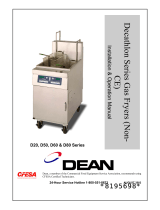 Dito Dean D20 User manual
Dito Dean D20 User manual
-
Dean Super Marathon SM60 Installation & Operation Manual
-
Dean D50 Series Installation, Operation & Maintenance Manual
-
Dean FPD65 User manual
-
Dean SCFD Installation & Operation Manual
-
Dean SCFD Specification
Other documents
-
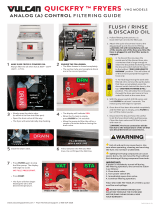 VULCAN & WOLF QuickFry Filter User guide
VULCAN & WOLF QuickFry Filter User guide
-
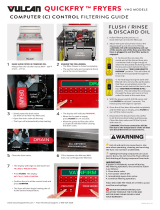 VULCAN & WOLF QuickFry Filter User guide
VULCAN & WOLF QuickFry Filter User guide
-
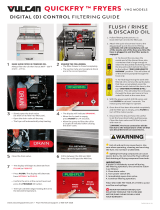 VULCAN & WOLF QuickFry Filter User guide
VULCAN & WOLF QuickFry Filter User guide
-
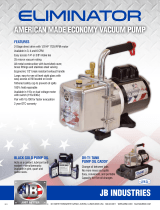 JB Industries 192303 Dimensions Guide
JB Industries 192303 Dimensions Guide
-
 Frymaster Super Cascade Operating instructions
Frymaster Super Cascade Operating instructions
-
Hobart ML-126832 User manual
-
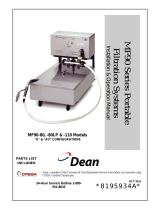 Frymaster Dean MF90 Portable Filtration Owner's manual
Frymaster Dean MF90 Portable Filtration Owner's manual
-
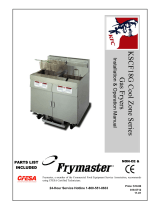 Frymaster KSCF18G Operating instructions
Frymaster KSCF18G Operating instructions
-
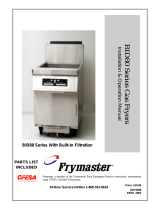 Frymaster BID80 Series User manual
Frymaster BID80 Series User manual
-
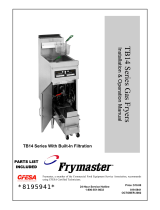 Frymaster Dean/ TB14 Series Gas Fryers User manual
Frymaster Dean/ TB14 Series Gas Fryers User manual










































